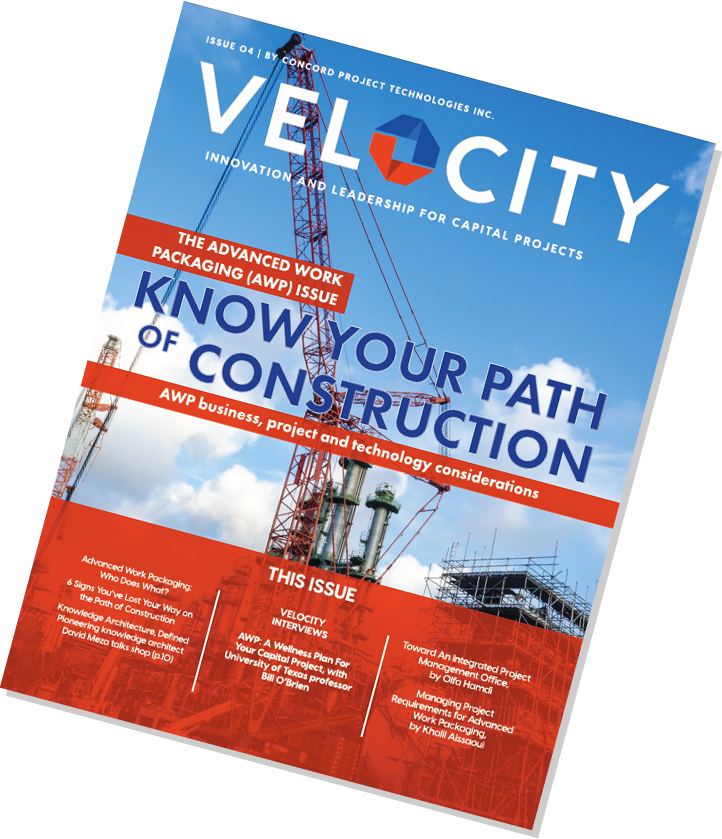Glen Staggs learned some hard lessons when he tried to implement AWP on a $2.5 Billion megaproject. Now he’s sharing them with you
 Glen Staggs has been involved as Project Director/Manager, Consultant and Advisor with large global oil and gas, petrochemical and chemical capital projects, planning and execution for over 45 years, both as Owner and EPC Contractor. He is a proponent of “end in mind”, construction-driven project execution starting early in project development. Over half of his career was spent working on large international projects outside of the United States.
Glen Staggs has been involved as Project Director/Manager, Consultant and Advisor with large global oil and gas, petrochemical and chemical capital projects, planning and execution for over 45 years, both as Owner and EPC Contractor. He is a proponent of “end in mind”, construction-driven project execution starting early in project development. Over half of his career was spent working on large international projects outside of the United States. The year was 2014, and Glen Staggs was a veteran capital project management leader with more than four decades’ experience working at some of the world’s largest EPC Contractor and Owner companies, with a long list of successful projects. He had been hearing about Advanced Work Packaging (AWP) for several years, and was encouraged by reports coming from the Construction Owners Association of Alberta (COAA), Canada, where oilsands companies were showing improved efficiency and project predictability thanks to pioneering AWP protocols. When he was assigned to his next project at the start of Front-End-Loading (FEL) Phase 2 — directing a major $2.5 billion Gulf Coast capital project for a major international owner company — he knew he wanted to include the AWP process in the project’s execution plan.
“I learned more details, especially the benefits of Advanced Work Packaging when I attended a 2014 AWP conference sponsored by CII and COAA and I was enthusiastic about introducing AWP to the execution plan for this particular project,” Staggs said. “We were looking for predictability, because the Executive Leadership and the Board of Directors didn’t want to be asked for more money and more time.”
It was early days in the development of AWP principles and practices, and there were few industry standards or guidelines for integrating the concepts into a company’s execution strategy, Staggs said. “We started with a construction-driven mindset, a ‘begin with the end in mind’ mentality,” he said. The team established a Path of Construction, brought in the construction team early, and hired a major EPC contractor. The company wanted to accelerate the project timeline, reducing the FEED phase by months.
It’s hard to pinpoint precisely when the AWP systems they’d put in place began to falter, and harder still to identify the critical errors that led to the problems and delays. What is certain, however, is that when the project began to stall, the root causes for such a change were harder and harder to identify and the AWP implementation among many other business and project factors and practices were disregarded.¹
AWP is not a tool that you add to your project execution toolbox. It is a fundamental transformation of the processes and systems used to build a capital project, from start to finish.
Glen Staggs Tweet
“At the time when we launched the AWP process early in this project’s development, the industry didn’t have a proven, practical, step-by-step implementation strategy like the one we teach today at Concord®,” Staggs said. “Today I firmly believe that properly employing AWP on major projects is the best path forward to achieve predictable safety, cost and schedule objectives, but it’s very clear to me that it needs to be adopted carefully, with a proven approach and a Predictability Thinking™ mindset.”
By sharing these lessons learned, he hopes to help others avoid similar mistakes while encouraging them to take advantage of new, more robust AWP implementation and training strategies.
Lesson #1: Educate Enterprise-Level Executives
Staggs said that one of the most important lessons learned is having the owner company’s executive leadership buy-in for the complete end-to-end AWP implementation process, which is absolutely critical to success when introducing AWP to a capital project organization for the first time. It’s not enough for enterprise-level executives to simply green-light the move, either. They must understand how AWP works, and — critically — how it impacts all the moving parts of a capital project organization and what investment is needed to ensure the success of the implementation. They must understand that AWP represents a major paradigm shift and that it will fundamentally transform the way capital projects get built.
“When it comes to the executive team, education is essential,” Staggs said. “Executives need to understand that AWP will impact the entire organization, and that all areas need to be trained and on board if they want AWP to deliver results.”
Lesson #2: Prioritize Business & Project Organizational Alignment
“Advanced Work Packaging success is all about alignment,” Staggs said. “If parts of your organization are still clinging to old execution processes and operating in their ‘silos’ while others are pressing forward with AWP, you will have problems.” Once the enterprise-level executives are educated about AWP and have signed off on company-wide AWP implementation, the next step is to provide training and education to all of the key stakeholders and have their full buy-in, based on their roles and responsibilities.
“AWP is an investment, and you start by investing in your people through training and education,” he said. AWP is not a tool that you add to your project execution toolbox, it is a fundamental transformation of the processes and systems used to build a capital project, from start to finish. The expectation is that teams from all departments will take their AWP training and apply it to their own work area, so that everybody is rowing in the same direction.
“The goal is to build and integrate AWP into the fabric of the company’s project management and stage-gate processes, and we didn’t do that because it was a first for the owner company and AWP hadn’t been tried,” Staggs said. “It was a huge lesson learned.”
Lesson #3: Start Even Earlier Than You Think
“I thought we had started AWP early enough, but we hadn’t, we didn’t know what we didn’t know, so to speak,” Staggs said. For companies starting their AWP journey, the implementation process should begin with the identification of an appropriate pilot project, get it right and continue from there, he said. You’ll want to prepare your scheduling and roadmaps, integrating the AWP steps, then workshop them with your project team, followed by contractor orientation and training so you can make sure your contracting strategy is fully aligned.
“Develop and incorporate into the Project Execution Plan, your AWP procedures and practices early,” he said. “It will save you a lot of headaches down the road.”
Staggs now works as a Concord® consultant, leveraging his hard-won expertise — and Concord®’s proprietary AWP implementation strategy — to help organizations predictably deliver capital projects safely, on-time and on-budget.
To learn more about how Concord® can help you adopt AWP and improve your project outcomes, contact us today.
¹ Concord® Expert’s Note: Our experience shows that the use of the POC in FEED always ends up increasing the accuracy of project schedules and estimates which tend to be on the aggressive side. Most Owner companies use AWP in FEED for the purpose of increasing predictability and ultimately reducing the likelihood of late changes post Final Investment Decision (FID). Pro Tip: Clearly explain the AWP expected consequences to leadership prior to implementation.





